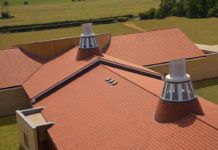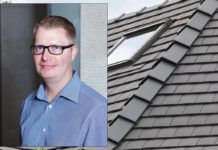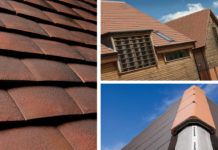
Lead is undoubtedly the king of roof flashing materials. It is the ideal material in terms of performance, workability and durability; with its low melting point and easy malleability, it can be fashioned into virtually any shape. Lead in roofing has been around for centuries, used by the Romans and Normans as a gutter and flashing material. It will last hundreds of years on a roof and is 100% recyclable. I just want to make those points clear before I start on this month’s theme, which is about lead replacement products.
There are an increasing number of lead replacement products now available on the UK market that overcome some disadvantages with lead, such as cost, environmental or poisoning concerns, or even to eliminate the risk of the flashing being stolen because of the high scrap value of lead.
Spiralling metal costs have led to a huge increase in thefts of lead from buildings. This can cause major damage to an unprotected building through water ingress, as well as the inconvenience during remedial works and the resulting potential increase in insurance premiums. Lead replacement flashing materials are only of value to the installer, building owner and occupants; they have no re-sale value as scrap.
Exposure to lead is a well-known health risk through inhalation of dust and fumes containing lead or ingestion. There are, of course, long-established safety measures available for workers handling and installing lead products; valuable guidance for working with lead is available from the HSE. However, in my view, a better approach is to avoid the material altogether.
What do we mean by a flashing?
Generally, flashings are used to ‘weather’ or ‘waterproof’ the various roof junctions between tiling faces, for example at a valley, or between the tiling and a wall or other upstand where the tiling finishes at a side abutment, or where a ridge or hip meets a wall or at junctions between hips and ridges etc. Some types of roof flashings are completely hidden when installed; for example, soakers used to weather the junction between a wall and plain tiles or slates, or continuous secret gutters used with single lap tiles at side abutments. Therefore, roofers will often choose to use lead replacement products for these types of flashings, as appearance is not important.
There are other applications where appearance is important, for example valley linings and cover flashings. For these applications, there are lead replacement products available that actually look very similar to lead. Alternatively, for applications where designers prefer the flashings to be as unobtrusive as possible, lead replacement products in colours to match or complement the tile colours are ideal. For example, where an exposed flashing may need to run the entire length of a roof slope; such as a mansard change of roof pitch detail, or where top course tiles and slates at top abutments need a cover flashing. Of course, colours that are obviously not lead colours are an ideal way to signal to anyone minded to steal the lead that it is not lead!
There are also technical application advantages that I feel lead replacement products have over lead. Having an adhesive backing means that they do not need to be welded, so where two pieces are to be joined, the material can simply be overlapped and bonded. In addition, because replacement flashings bond to the tiles, they have the advantage that water cannot creep or be driven between the flashing and tiles, which can sometimes happen with lead cover flashings. Lead replacement products are generally not susceptible to thermal movement, therefore longer valleys or apron flashings can be formed without seams or expansion joints.
Lead replacement products are up to 80% lighter in weight than lead, making them easier to transport in bulk, handle on the roof and to install without the use of any special tools or equipment.
There will long be a role for lead flashings in pitched roof construction, particularly in heritage and conservation work. However, I feel innovation with alternative materials, which have many of the properties of lead, such as high malleability and with a very similar appearance to lead, but none of the concerns, is making the use of lead replacement products an increasingly viable option.
For info on Wienerberger’s KoraFlex Plus visit: www.wienerberger.co.uk



